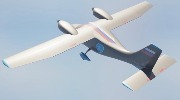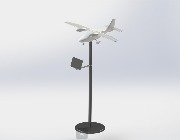Unmanned Aerial Vehicle was Developed on the Basis of MAI-411 Aircraft
In the center of unmanned aerial vehicles of Moscow Aviation Institute (National Research University), the concept of the optionally piloted aircraft (OPA-411) was created on the basis of the lightweight multi-purpose four-seat aircraft MAI-411, developed at the MAI Special Design Bureau of Experimental Aircraft Engineering.
The optionally manned aircraft can be controlled by both the pilot and the on-board robotic production system of Kronstadt Group, which has the ability to integrate with machine vision equipment, which increases the reliability of the OPA-411 control system. In unmanned mode, after receiving a flight mission, the aircraft operates autonomously from the moment of take-off to the moment of landing.
Thanks to the robotic control system, the operation of optionally manned aircraft becomes more profitable than manned aircraft. Passenger transportation can be carried out with the participation of the pilot, and the tasks of transporting goods, aerial photography, patrolling oil and gas pipelines, power lines, forests, ponds and other objects in an unmanned version.
The use of optionally manned aircraft allows you to increase daily flight time, which leads to lower operating costs.
“The technical and economic analysis of the market for the transportation and operation of UAVs shows that the use of OPA-411 will in the long run occupy up to 15% of the transportation market,” said Maxim Kalyagin, Deputy Director of the Center for Unmanned Systems at Moscow Aviation Institute.
The cost of delivering goods using the OPA-411 is comparable to road haulage, and the possibility of landing on unimproved runway, fields or ponds (when installing float landing gears) allows to deliver passengers and goods with minimal investment in the infrastructure of hard-to-reach regions.





